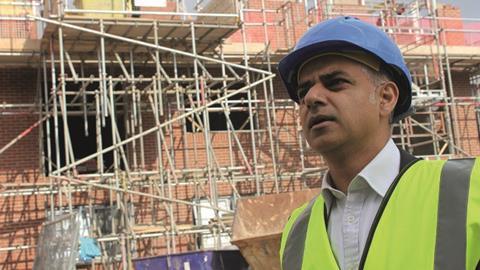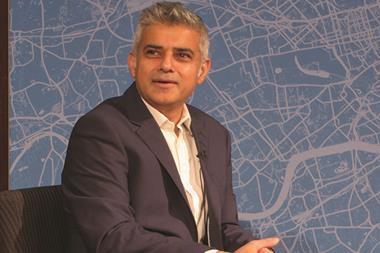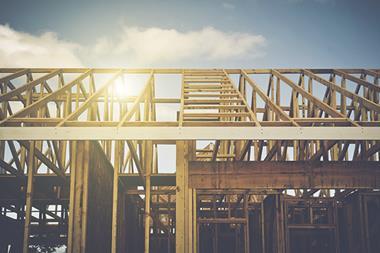Less than three months after London mayor Sadiq Khan unveiled radical changes to London’s viability system, developers are already feeling its impact.

Under the terms of the supplementary planning guidance (SPG) announced in November, any developers offering 35% affordable housing on a scheme will be waved through planning without viability checks, while those that do not will be subject to scrutiny and have to make their viability assessments public.
The aim, the mayor said at the time, was to drive down land prices and boost affordability in the capital. So how is the SPG affecting the market?
The feedback from leading agents and developers is mixed.
If 35% makes a site unviable, you then go to an office scheme instead and you get less housing - Justin Gaze, Knight Frank
Knight Frank’s head of residential development Justin Gaze says that some developers are already flipping developments from residential to commercial property as a result of the new guidance.
“The sentiment is right and everybody realises that London needs affordable housing in order to make the city vibrant,” he says. “The problem is that if the 35% makes a site unviable, you then go to an office scheme instead and you get less housing.”
Gaze adds that councils are tightening their viability assessment processes for schemes delivering less than 35%, making commercial development more attractive still.
Tricky regime
The new regime is proving particularly tricky for those developers that purchased land before the guidance assuming a contribution of less than 35%, he adds.
However, Adam Challis, head of residential research at JLL, argues that schemes are only switching to commercial in areas where residential prices were “softening” anyway.
“Sometimes you get those decisions and you can blame whatever the nearest thing might be, such as the SPG, but it would be hard to say that’s the reason why,” he says.
He adds that while some developers, particularly in central London, are angry about the new guidance, others are taking the change in their stride.
“I think it’s a mixed picture,” he says. “Some clients say 35% represents real difficulty and I’ve had conversations where it [merely] represents a different approach.
“The longer-term story is a good one - the challenge developers have is the current work they have in progress.”
Price adjustment
HUB managing director Steve Sanham believes the new guidance will prompt an adjustment in land prices as developers begin to factor 35% affordable housing into their plans.
“If the mayor holds his nerve on the 35%, it will see a correction in land prices and that’s probably a positive thing,” he says.
Challis is not convinced. He points out that under the new guidance, it is still possible to pursue developments with less than 35% affordable housing.

“What is more likely is that land values will firm up around the 35%,” he says. “The best hope for the mayor is that you don’t get that very strong cyclical uplift that would be associated with the next wave of growth in the resi market.”
The full impact of the mayor’s guidance has yet to play out. On the plus side for developers, at least Khan has rowed back on the initially mooted 50% affordable housing target. On the negative, the 35% looks set in stone - meaning that, inevitably, some sites will no longer be commercially viable.
Paradoxically, that could, of course, lead to less affordable housing being delivered. Time wil tell.






























No comments yet